|
3rd step: Get a good tape
There are different kinds of tapes, and not all of them are equal. The same thing was applied to analog photography: there were different kind of roll films, and choosing the best one did improve the results quite a bit.
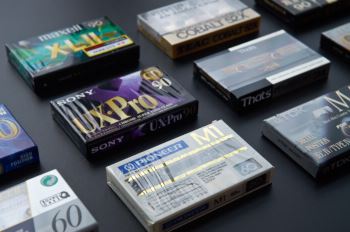
Some very high quality and rare tapes in my collection. All are chrome or metal type.
Nowadays it is getting more and more difficult to find good tapes at cheap prices, but they still can be found in 2nd hand markets as well as in eBay.
Normal, chrome or Metal?
These are the three kind of tapes available. The difference among them is the necessary bias (learn about bias here) current that the record head has to apply to the tape during recording. You can avoid metal tapes by now, as they need very high quality decks to get the best results. Also, many walkmans doesn't offer good quality with these tapes, as the noise gets high.
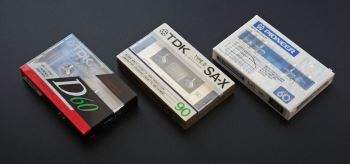
The three type of tapes (from left to right): normal, chrome and metal.
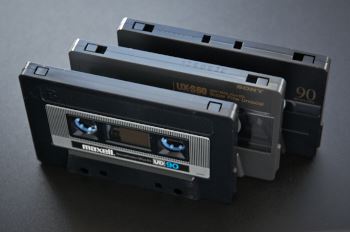
They can be easily identified by the holes in the top.
Left to right: normal (type I), chrome (type II) and metal (type IV).
I recommend you using normal or chrome tapes most of the time. Many people think that the key to get high quality is to just pick chrome tapes over normal ones, but this is a quite simplified thinking and a not-so- true statement. There are excellent normal tapes and bad quality chrome tapes, and the opposite is also true.
Metal tapes can offer a very high quality, in pair with the best chrome tapes. Choosing one or another is a matter of taste. Anyway, metal tapes tend to be more expensive than the rest.
Any recommendation?
The most important thing is to pick high-level tapes and not the standard ones. For example, the TDK D is the base level normal tape (quite good, BTW) and the CDIng was the base level chrome tape. But the quality is much higher in the TDK AR or the TDK SA.
FYI: A TDK AR (high-level normal tape) offers much better quality than a simple chrome TDK CDing (base-level).
With chrome tapes you can achieve lower background noise. I can recommend you TDK SA, SONY UX-S and Maxell XL-II and XL-IIs. They are easy to find, cheap and offer excellent quality.
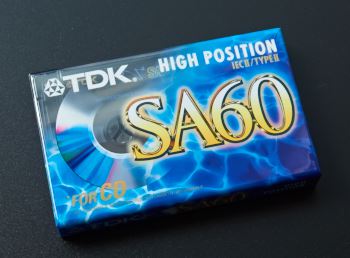
TDK SA: One of the most appreciated tape by analog lovers, thanks to it's high quality and affordable price.
4th step: Connect cables
Line out or headphone out?
There's always confusion about this subject. Though both can feed sound and can power headphones, they differ a lot in impedances.
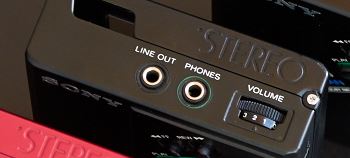
SONY WM-DC2, one of the few walkmans with line out & headphone out.
Line out is aimed to connect to other Hi-Fi devices without any problem. All Hi-Fi devices have the same specifications regarding line level, so they are 100% compatible. However, professional audio gear have different line level, so mixing professional and home gear is not a good idea.
Headphone output is aimed to connect and drive headphones, so they are not so well suited for connecting to a line level.
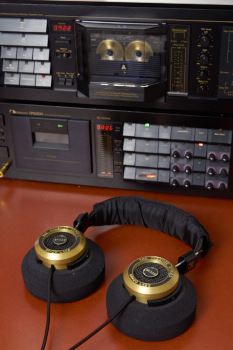
My Grado SR325i, connected to my Nakamichi RX-505.
If you want to do good recordings, you may use a line output from your source plugged into the line in of your recorder. Any other configuration will lower the quality of the result.
All decks have line in & out RCA connectors, and some high quality walkmans have them too (jack connector, not RCA), like the SONY WM-D3 or the D6C. Both of them are recommended.
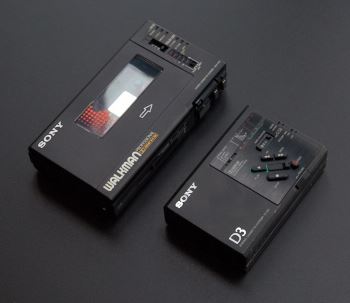
SONY WM-D6C & D3: Two of the best recording walkmans ever made.
5th step: Set-up source
Prepare the music list
When recording tapes, you usually want to prepare all the music for the entire side of the tape, so you do not have to stop at the end of each song. That's because it's very easy to hear 'clicks' in the final recording between every song.
If you have MP3 as source, it's a good idea to build a playlist in your software so all songs will play begin-to-end without hassle.
Another thing you should pay attention to is the total duration of the playlist. As tapes have a limited duration on each side, you may want to select and sort your songs so they match the duration of each side.
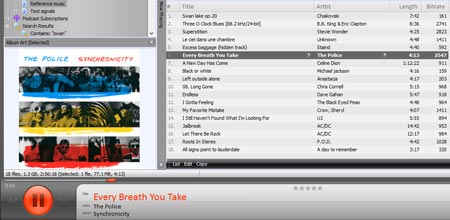
Playing a playlist in Mediamonkey, an excellent free alternative for playing digital music in your computer.
Adding time is not as easy as adding standard units or money, for example, although you can use some utilities. First you may know the exact duration of your songs. And also bear in mind that commercial blank tapes normally have one or two minutes more on every side than announced. But there's not an exact rule; it varies from a manufacturer to other. So if you have many tapes of a particular type, you would be better off measuring them (old-school method: with a stopwatch) once and put a note in your desk to not forget it. Your tapes will not have wasted any minutes on any side.
Set volume to max
HI-FI gear do all work with the same signal level: Line-IN and OUT, which corresponds to a particular voltage and impedance. Computer sound cards usually have a Line out plug (commonly a 3,5" jack), but they only achieve the proper voltage when the volume is set to the max. Laptop sound cards are usually very weak in terms of power and, even set to maximum, don't achieve the proper level.
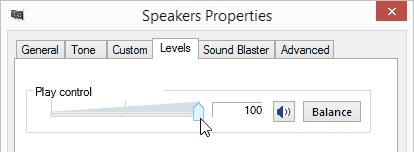
Setting the output level of the soundcard to the maximum.
High-quality and prosumer sound cards can usually achieve this level without problems.
Disable special effects on player
Many sound card drivers have a lot of extra features, like surround, spatial stereo, EQ, compressor, etc... Also many audio player software offer a lot of similar features. These features can be useful in some circumstances, but for recording tapes they are all a problem, as they modify and distort the original sound. So it's a good idea to check all options of your sound card and disable anything 'strange' or any feature that is supposed to 'improve' the sound.
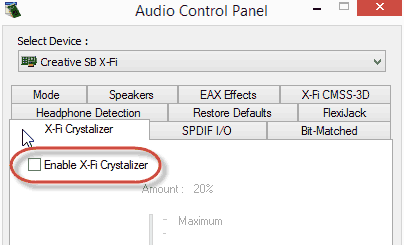
Disabling the 'Crystalizer' sound effect in a Creative X-Fi sound card, inside the card's properties.
There are many more effects to disable in the other tabs of this window, though...
If you're using a Discman or Minidisc player, set off any bass enhancing feature (like MegaBass, SuperBass, DSL…). If you are thinking something like "but, hey, it only sounds well with it!", then I tell you: trust me, that even if you think the sound is very weak without it, the electric output signal is best in that way.
|
![]()
![]()
![]()
